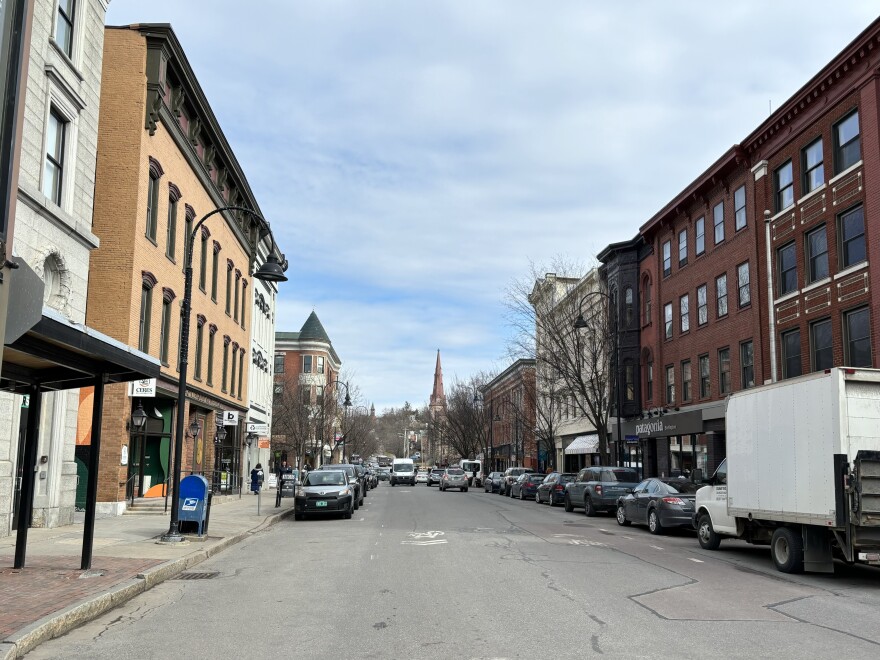Vermont’s largest city has launched a new initiative that allows first responders to administer opioid addiction treatment medication at the scene of overdoses.
It’s an approach that some states have tried in recent years. And research indicates it’s an effective way to get more people who struggle with opioid misuse into treatment.
Overdoses have skyrocketed in Burlington in recent years: As of mid-November, the city’s fire department had already responded to 555 overdoses in 2024 — that’s three and a half times as many as five years ago.
At the same time, more people are refusing to be transported by EMTs to the hospital after they’ve been revived from the overdose, which means they’re not getting follow-up care, or a chance to get funneled into addiction treatment.
“It's a missed opportunity,” said Dr. Dan Wolfson, an associate professor of emergency medicine at the University of Vermont, and the state’s EMS medical director. “In the emergency department, we will connect them with opportunities for ongoing treatments and care, like starting them on buprenorphine or methadone, but if they don't come into the ED, they're not getting that.”
Some states, like New Jersey, have launched programs that allow paramedics at overdose scenes to administer buprenorphine, a medication used to treat opioid addiction. Wolfson thought it might be worth trying this type of program in Vermont.
Burlington Fire Department officials, like EMS Battalion Chief Marsha McCombie, agreed. The city launched its program in mid-November.
“We're now offering a treatment program that people can get into, and we're being that bridge,” McCombie said in a recent interview. “So instead of delaying that time to where someone can really sit there and kind of get back into those habits, they have the opportunity to enroll in treatment at that time.”
The department wanted to expand the program beyond paramedics — a profession that requires a high level of training — to also include Advanced Emergency Medical Technicians. Burlington has around 60 AEMTs, and 20 paramedics.
If they look like they're having these signs and symptoms of withdrawals, we can just say, ‘Hey, you know, we have something that could help you. Would you be willing to let us talk more to you about that?’Marsha McCombie, EMS battalion chief at Burlington Fire Department
Now, with the new program in place, about 80 first responders in the Queen City can give people buprenorphine when they respond to an overdose.
“If they look like they're having these signs and symptoms of withdrawals, we can just say, ‘Hey, you know, we have something that could help you. Would you be willing to let us talk more to you about that?’” McCombie said. “And then we have a whole bunch of criteria that we go through.”
First responders like McCombie have an opportunity to catch people at a critical time after they’ve been revived with naloxone, an overdose reversing medicine. Burlington, like many departments, has been carrying naloxone for years, and while it’s good at saving people’s lives when they overdose, it doesn’t stave off their ongoing cravings for opiates.
Buprenorphine, on the other hand, is a drug that can reduce cravings, and is an effective way to treat opioid misuse. But Jacqueline Bray, a nurse with Howard Center, said the rise of fentanyl — a powerful synthetic opioid — has blunted the effectiveness of buprenorphine.
“They're needing to abstain from opiate use for sometimes several days before they can safely take buprenorphine, because if you take it too, too soon, it can actually make you experience more withdrawal symptoms,” Bray said in an interview.
But when someone overdoses and is revived using naloxone, the opioids are wiped from their system, which provides a golden opportunity.
“You don't have to wait for the body's natural process to kind of get rid of that,” Bray said. “And so then a person can take the buprenorphine without risk of precipitating withdrawal symptoms.”
The new initiative also directs people to community resources, like connecting them to a peer recovery coach through Turning Point Center of Chittenden County and getting a referral to continue their buprenorphine treatment at Howard Center.
It is allowing us to have our work be a bit more straightforward, where we can solely focus on keeping a person wrapped with love, support, compassion — everything I needed when I first got sober.Cam Lauf, executive director of Turning Point Center of Chittenden County
Cam Lauf, the executive director of the Turning Point Center of Chittenden County, thinks the new initiative will lower barriers for people to get into treatment.

“It is allowing us to have our work be a bit more straightforward, where we can solely focus on keeping a person wrapped with love, support, compassion — everything I needed when I first got sober,” Lauf said in an interview.
The program has been in place for about a month, and so far the Burlington Fire Department hasn’t administered any buprenorphine. Burlington Fire Chief Michael LaChance said his primary goal is getting people connected to recovery programs.
“I think that’s the key, it’s long-term engagement with service providers,” LaChance said. “And if we can get 25% of those folks to stay engaged, I think that's a win.”
LaChance said those numbers don’t have to be big for this program to be successful.
Have questions, comments or tips? Send us a message.





